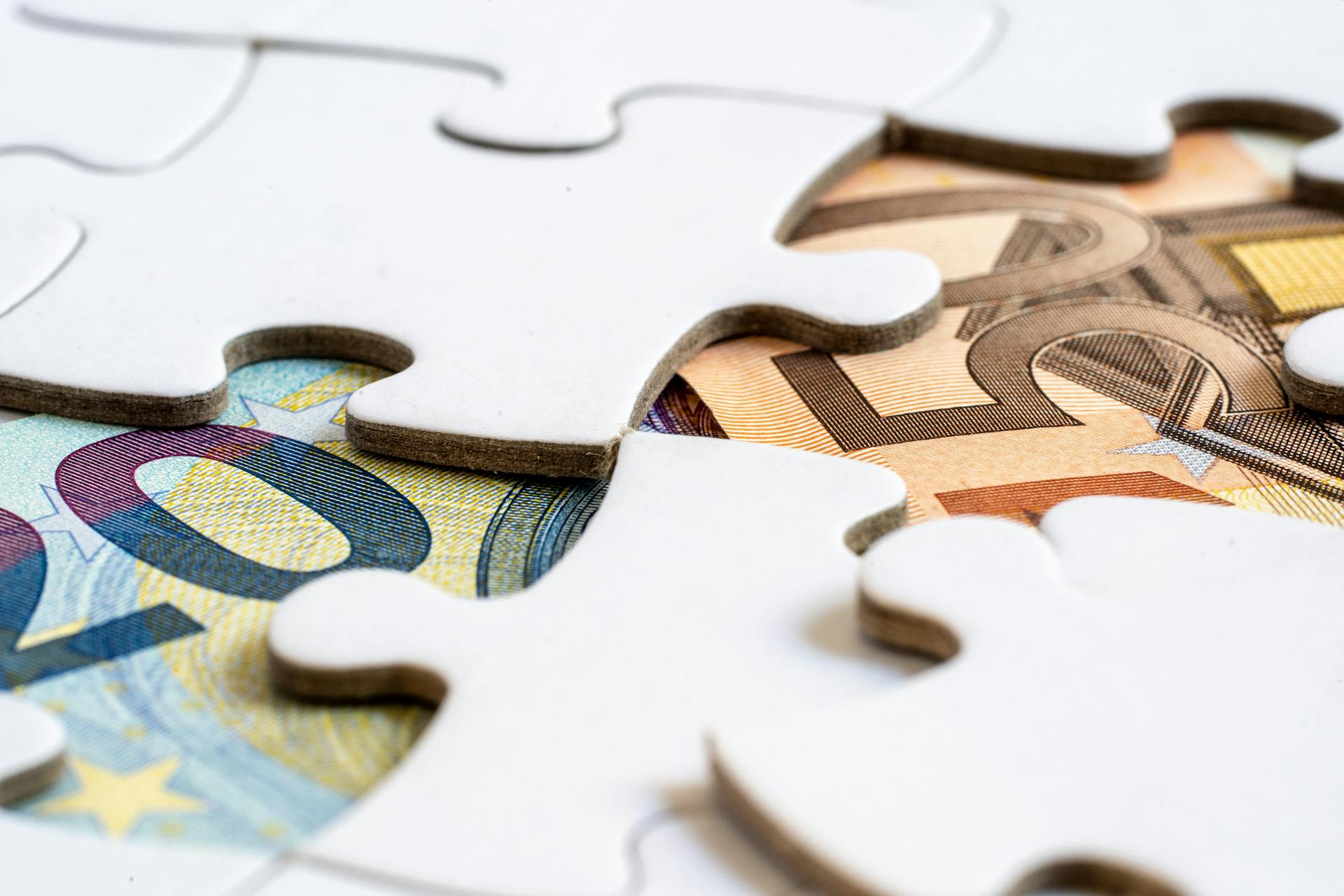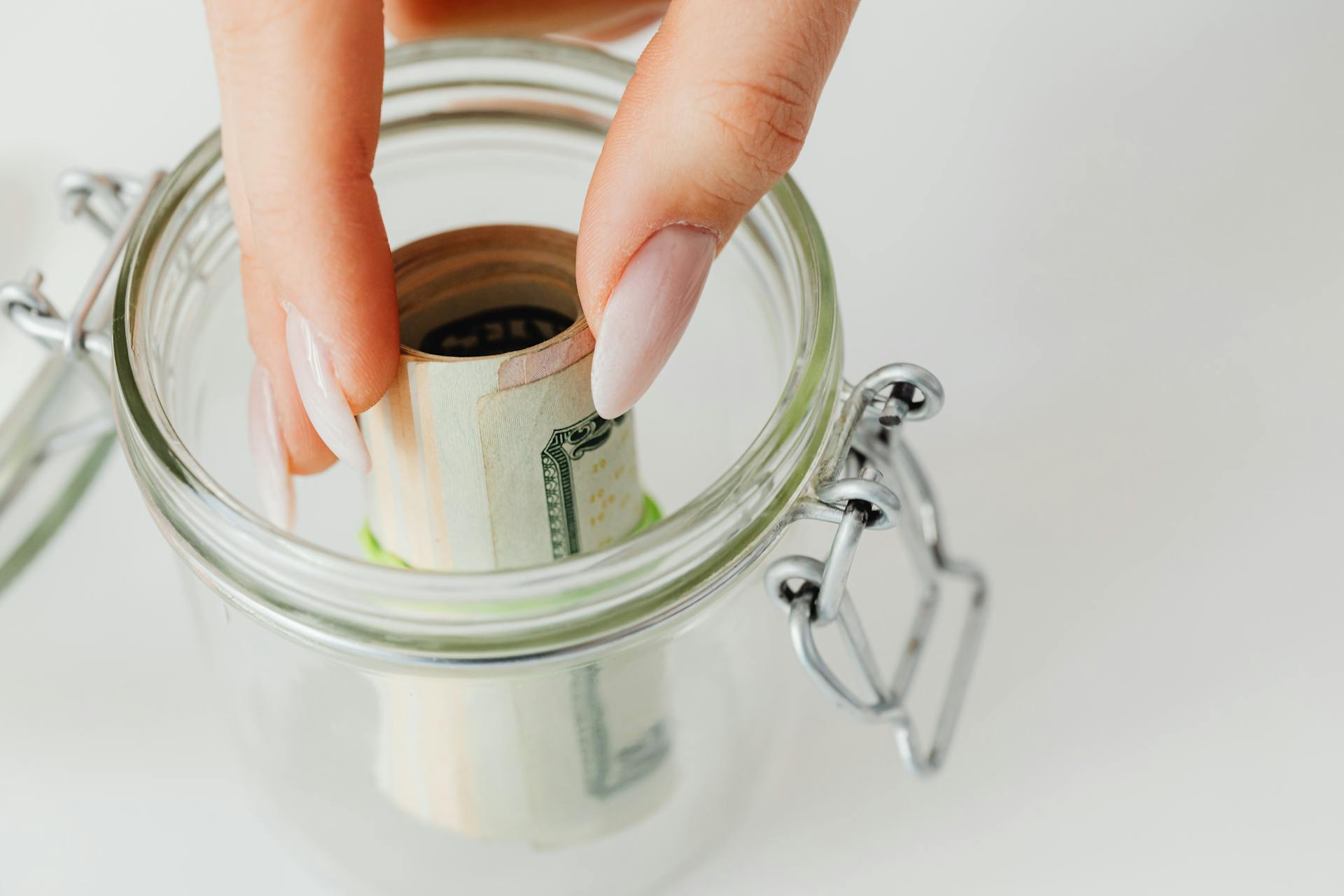
The Czech koruna, also known as the CZK, is the official currency of the Czech Republic. It's a great currency to learn about, especially if you're planning a trip to the Czech Republic.
The koruna is divided into 100 haléřů, which is the Czech word for "halers." You might not need to know this, but it's interesting to learn about the currency's history.
The Czech koruna has been the official currency since 1993, when the country gained independence from Czechoslovakia.
History of the Koruna
The Czech koruna has a rich and complex history that spans over a century. The Austro-Hungarian krone replaced the gulden in 1892, at a rate of two kronen to one gulden, and was suggested by Emperor Franz Joseph I of Austria.
In the late 1920s, the Czechoslovak koruna was the hardest currency in Europe, a testament to the country's economic stability. The currency was artificially weakened during the Second World War on occupied Czech territory.
See what others are reading: Austro-Hungarian Gulden
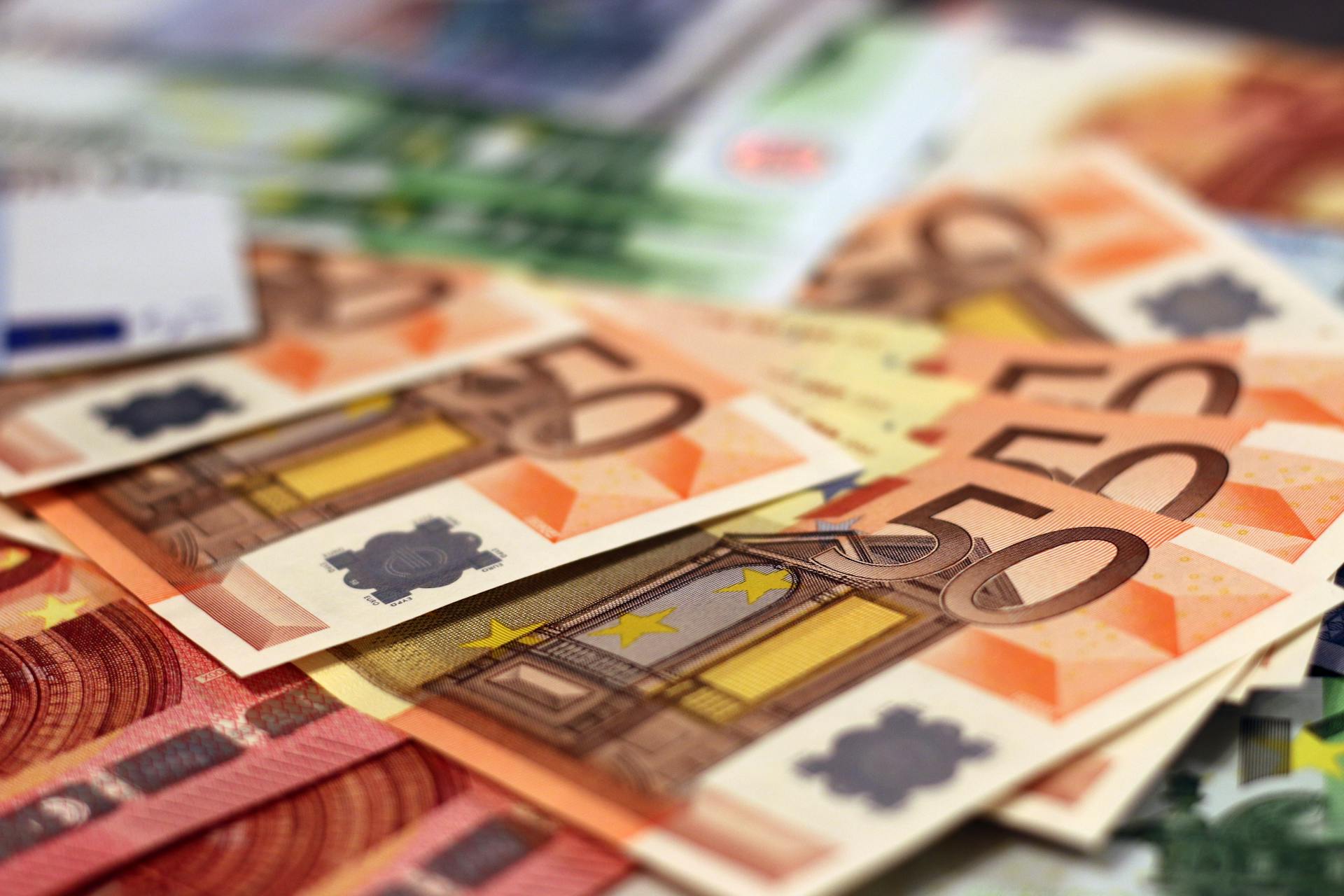
After the war, the Czechoslovak crown was restored, but it underwent a highly controversial monetary reform in 1953. The Czech koruna replaced the Czechoslovak koruna in 1993, following the dissolution of Czechoslovakia.
The Czech koruna first consisted of overstamped banknotes, and a new series was properly introduced in 1993. The Czech National Bank intervened in 2013 to weaken the exchange rate of the koruna, which led to higher prices of imported goods.
The ČNB removed the cap on the koruna's exchange rate in 2017, allowing it to float on the market. This move was praised for its smooth execution, with City Index Group stating that the ČNB showed how to drop a currency peg correctly.
Take a look at this: Czechoslovak Koruna
Euro and Koruna
The Czech koruna has a complex relationship with the euro. The Czech Republic planned to adopt the euro in 2010, but its government suspended that plan indefinitely in 2005.
Only a small percentage of the Czech population is in favour of adopting the euro. According to a survey conducted in April 2014, only 16% of the Czech population was in favour of replacing the koruna with the euro.
The majority of the Czech population is opposed to euro adoption, with a survey conducted in April 2018 showing that only 20% of the Czech population above 15 years old supports it.
Suggestion: Series B Banknotes
Euro Adoption Discussion

The Czech Republic has been discussing adopting the euro as its currency for many years. The country planned to adopt the euro in 2010, but its government suspended that plan indefinitely in 2005.
Only a small percentage of the Czech population supports adopting the euro. A 2014 survey found that just 16% of Czechs were in favor of replacing the koruna with the euro, and a 2018 survey revealed that this value had remained nearly identical over the past four years, with only 20% of the Czech population above 15 years old supporting euro adoption.
The Czech Republic has chosen to maintain economic independence rather than become part of the eurozone. It officially became a member state of the European Union (EU) in 2004, but it did not adopt the euro as its currency.
Some political parties in the Czech Republic support adopting the euro, but popular public opinion is opposed to it. There are even opinions that the country should leave the EU, heard mostly in connection with the EU's regulations and immigration crisis.
The Czech Republic's reservations about joining the Eurozone are largely driven by the European debt crisis. The country's strong economy, with one of the highest GDP growth rates and lowest unemployment rates, has made it less inclined to adopt the euro.
Recommended read: European Unit of Account
Current
The current banknotes in circulation are a mix of old and new designs. The 100 Kč note, for example, has been in circulation since 1995 and is still valid today.
Here are some key features of the current 100 Kč note: it measures 140 × 69 mm, has a turquoise main color, and features Charles IV on the obverse and the Seal of Charles University on the reverse.
The 200 Kč note is also still in circulation, with the first series being issued in 1993. It measures 146 × 69 mm, has an orange main color, and features John Amos Comenius on the obverse and Orbis Pictus on the reverse.
The 200 Kč note has had several print runs, with the most recent one being issued in 1996. It's still widely accepted today.
Some notes are still valid even though they were printed a long time ago. The 500 Kč note, for instance, was first issued in 1993 but is still current.
Here are the current notes that are still valid:
- 100 Kč (1995 and 1997 series)
- 200 Kč (1996 and 1998 series)
- 500 Kč (1995 and 1998 series)
- 1000 Kč (1996 series)
- 2000 Kč (1996 and 1999 series)
- 5000 Kč (1999 series)
These notes will remain valid until 1 July 2022, after which they will be withdrawn from circulation.
Suggestion: Will the Swedish Krona Get Stronger
Koruna Currency
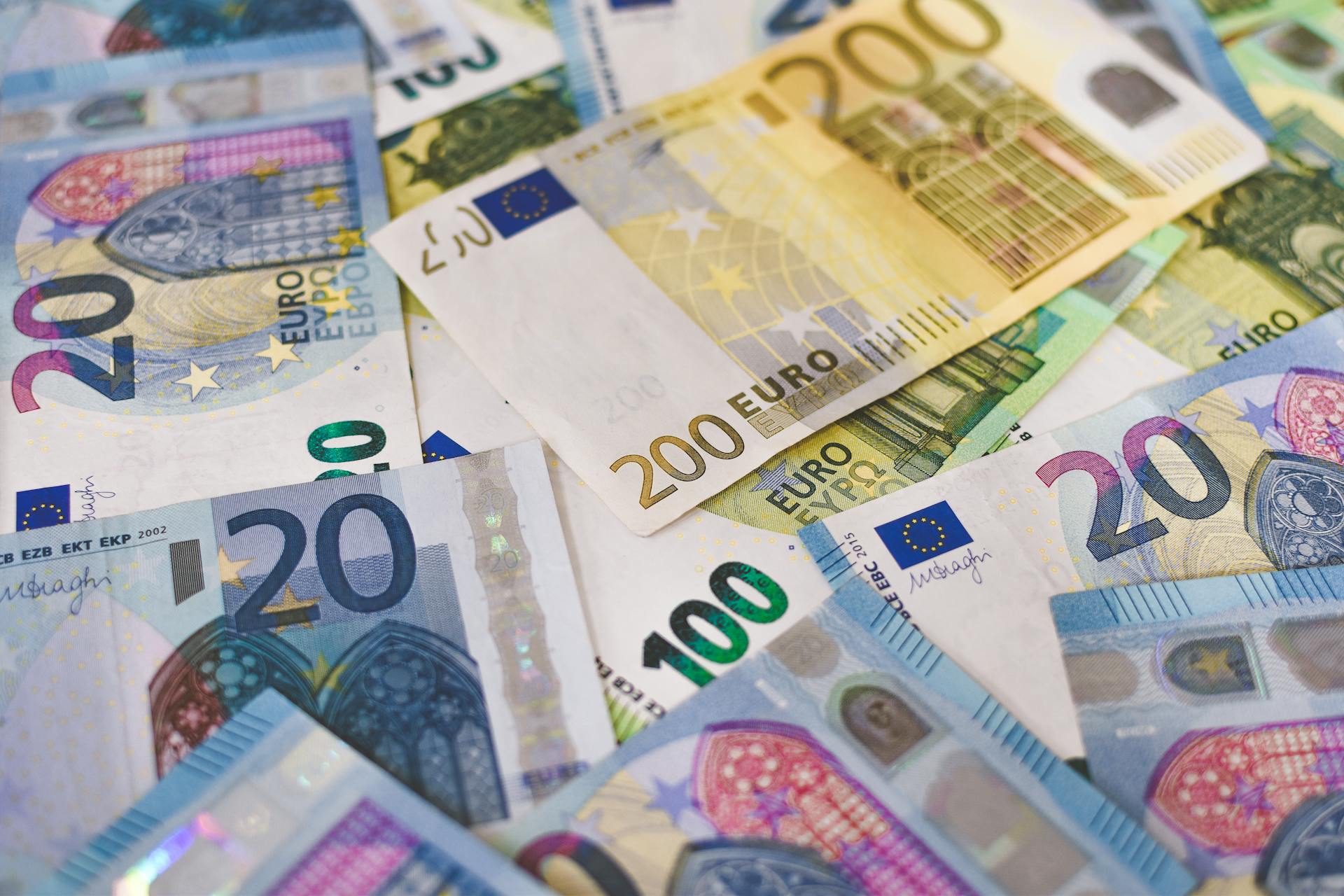
The Czech koruna, or CZK, is the official currency of the Czech Republic. It's comprised of 100 haléřů, although you won't often see those smaller units used in everyday transactions.
The koruna's design has undergone several changes since its introduction in 1993. Let's take a look at some of the notable banknotes from that era. Here are some key details about the 1993 series of Czech koruna banknotes:
Coins
Coins are a great way to experience the local culture, and in the Czech Republic, they come in a variety of denominations.
The Czech koruna coins increase in size and weight with value, making it easy to tell them apart. The bigger the coin, the higher the value.
You'll find coins in denominations of 1, 2, 5, 10, 20, and 50 CZK. The 1 CZK coin is made of steel, coated with nickel, and features the Czech lion on one side and the St. Wenceslas' Crown symbol on the other.
You might enjoy: Mexican Pesos Denominations
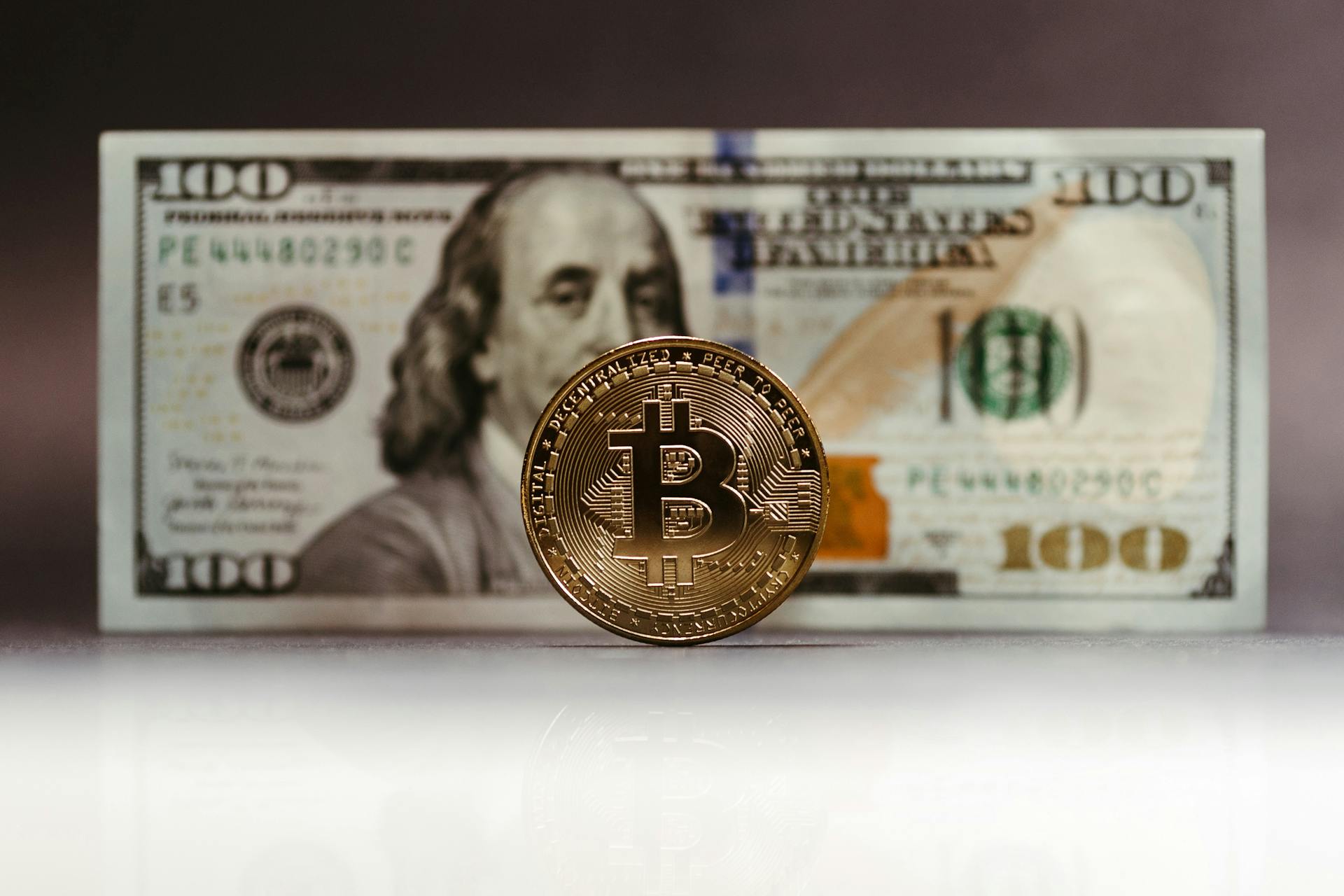
The 2 CZK coin is similar, but with a Grand-Moravian jewel on the underside. The 5 CZK coin is slightly bigger and features Charles Bridge on the underside.
The 10 CZK coin is coated with copper, giving it a reddish color, and features a cathedral on one side and a machine fragment on the other (in the 2000 version). The 20 CZK coin also exists in two versions, both coated with copper and zinc fusion, and features the Czech lion and St. Wenceslas on his horse (in the 1993 version) or an astronomical machine (in the 2000 version).
Here's a list of the Czech koruna coins, including their values, sizes, and materials:
The 50 CZK coin is the largest and features buildings typical for Prague.
Notes
The Czech koruna is the official currency of the Czech Republic, and it's essential to know the different denominations of banknotes and coins.
The Czech koruna comes in various denominations, including 100; 200; 500; 1,000; 2,000; and 5,000 CZK.
Consider reading: Costa Rican Colon Denominations

Czech banknotes are designed with renowned Czech persons on the obverse and abstract compositions on the reverse. Modern protective elements can be found on all banknotes.
The 5000 CZK banknote is not commonly found in circulation due to misuse or illicit activity.
New upgraded banknotes were introduced in 2007 with upgraded security features, including a new colour-shifting security thread, additional watermarks, and EURion constellations.
The 100 CZK banknote exists in two valid versions (1995 and 1997), differing only in details such as adding a touch-sing for the sightless people on the newer one.
The 200 CZK banknote is decorated with the face of John Amos Comenius, the famous philosopher, pedagogue, and theologian.
Here's a list of the different denominations of Czech koruna banknotes:
The Czech koruna is widely accepted, and many travelers and residents like to have some cash available.
Definition of Koruna
The Czech koruna, or CZK, is the official currency of the Czech Republic. It's comprised of 100 subunits called haléřů.
The koruna gets its name from the word for "crown", which is similar to the etymology of the kroner used in Scandinavian countries.
Frequently Asked Questions
How much is $1 in Prague?
As of 31/12/2024, $1 is equivalent to 24.1759 Czech Koruna in Prague. Check the live currency converter for the most up-to-date exchange rate.
Why is the Czech koruna so strong?
The Czech koruna strengthens when the country's productivity, trade, and investment growth improve, while a decrease in global risk aversion also supports its value. This suggests a strong economy and stable global market conditions can contribute to a strong koruna.
Is euro accepted in Czech?
Unfortunately, Euro is not widely accepted in Czech Republic, but some businesses may accept it with a less favorable exchange rate
How do you write Czech currency?
The Czech currency is written as Kč. This is the official symbol used to represent the Czech Koruna.
Is Czech koruna still valid?
Yes, the Czech koruna is still a valid currency in the Czech Republic, with all banknotes remaining in circulation. However, older style banknotes with a thin metallic security thread ceased to be legal tender in July 2022.
Featured Images: pexels.com
